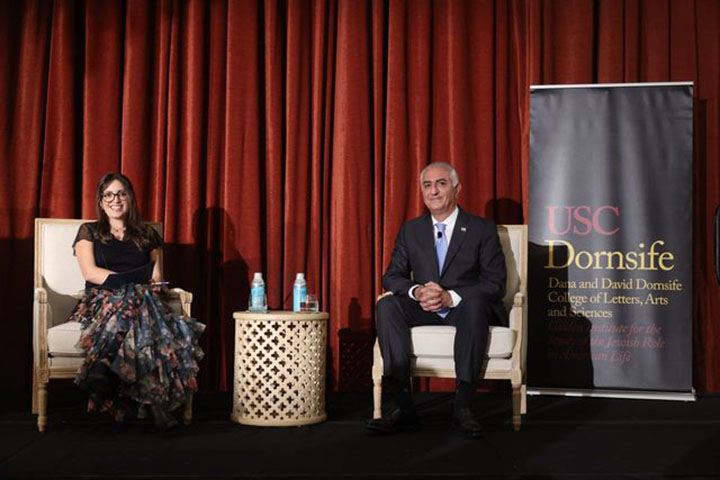In synagogues the world over Jewish people are reading the Biblical book of Exodus, with its quintessential moment of Jewish history. The Children of Israel, several weeks after their exodus from Egypt, reach Mount Sinai and there receive the two tablets of stone on which is written the ten commandments, followed by the rest of the laws of the Bible, 613 if you count them all. The moment is a powerful one. The Bible describes God descending on the top of the mountain in a “cloud”, speaking to the people of Israel and giving the tablets and the laws of the five books of Moses, the Torah, to the people.
If we pull back from the theophany, the Divine revelation, and view the scene big picture, it involves Moses on the mountain receiving laws to give to the people, and the Divine presence revealed at the top of the mountain. The law below and God above.
Following this episode, God tells Moses of the many intricate laws and instructions for building the tabernacle, a moving Temple the Jews took with them in their 40 year desert trek. The Bible describes how to make it, essentially a large tent with many intricate details, and many vessels which must be made and placed within this tabernacle and the clothing to be worn by the high priest who would bring the offerings in the tabernacle, light the candelabra (menorah) every day and burn incense.
Nachmanides, a renowned medieval Spanish Jewish scholar and biblical commentator asks what the purpose was of this tabernacle, which stayed in the center of the Israelite camp and moved with the people. He answers that it represented a miniature, movable, Mount Sinai; a way of keeping the experience of Divine revelation with the people throughout their desert travel and ultimately in its permanent place where it stood for 1000 years in Jerusalem on the Temple Mount as a more permanent building.
The central piece of equipment that was kept in the Tabernacle was the Ark of the Covenant. Popularised by Hollywood films, this ark stood in the Holy of Holies, the innermost sanctum of the tabernacle. The biblical description of this ark is telling. It was a gold box containing the two tablets of the law, above which was a flat gold cover. Two carved gold cherubs with wings emerging from the cover. According to the biblical description God spoke to Moses from above the ark, from between the two cherubs. Thus, the ark itself is truly a miniature rendering of the experience of the Jewish people at Mount Sinai. The law in the form of the two tablets below and God’s presence resting above, just like at the mountain.
Perhaps this tabernacle, with its ark’s Sainiatic resonances, kept with the jewish people for millennia embodies an essential human spiritual message. That God does not just appear to humans. Rather, it is the law, both ritual law and civil law, that facilitates the connection between the human and the Divine. Not transcending the physical but legislating it, forming a just and holy society here on earth, will enable Divine connection and the Divine presence to be attached to us here in the physical universe.































